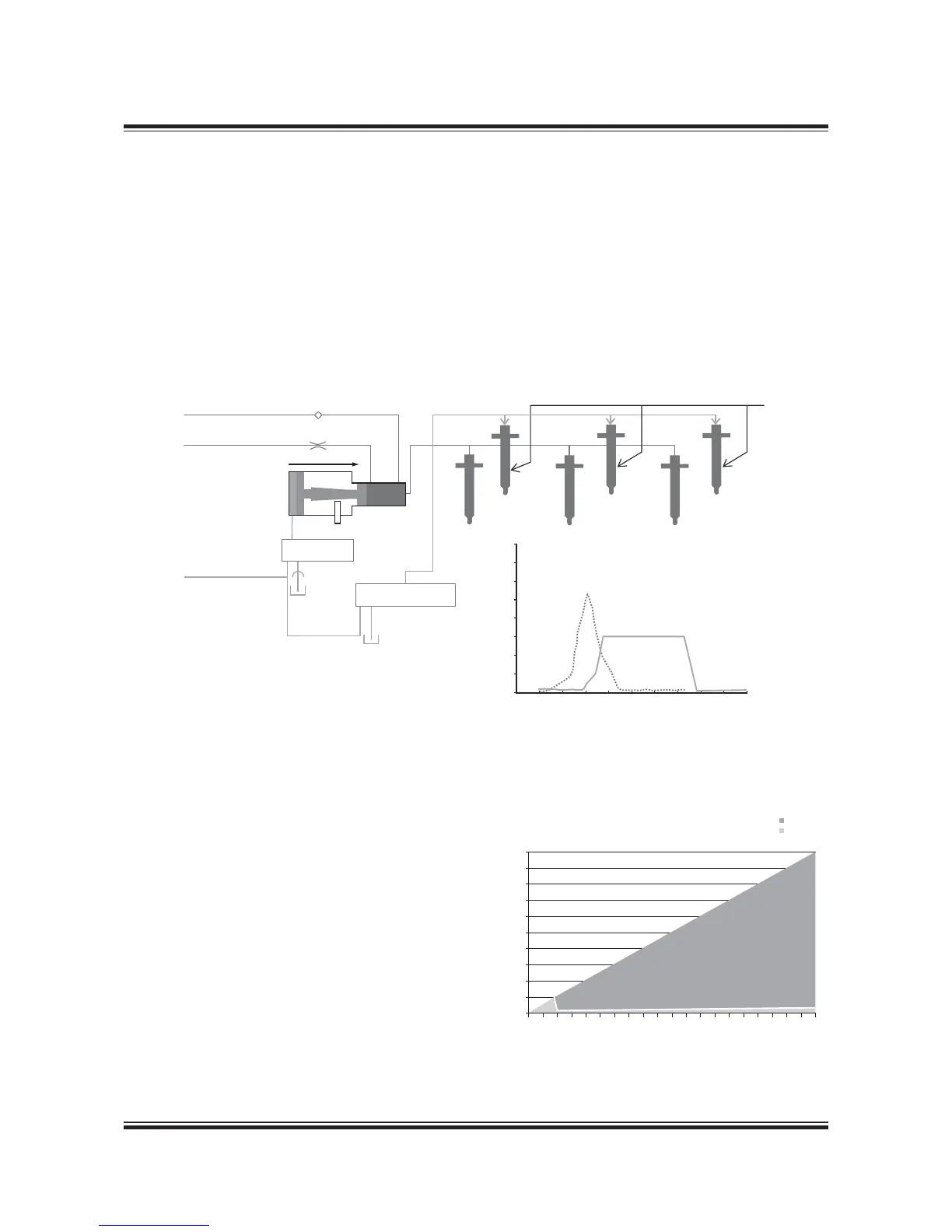MAN B&W 7.00
Page 4 of 6
MAN Diesel
MAN B&W ME-GI engines
198 88 81-9.2
The ME-GI fuel injection system
As can be seen in Fig. 7.00.03a, the fuel oil pres-
sure booster, that pressurizes the supplied fuel oil
(pilot oil) during gas fuel operation mode, is con-
nected to the FIVA valve that controls the injection
of fuel oil to the combustion chamber.
The 300 bar hydraulic oil also pressurizes the
ELGI valve controlling the injection of the gas fuel.
By the engine control system, the engine can be
operated in the various relevant modes: ‘gas op-
eration’ with minimum pilot oil amount, ‘specified
dual fuel operation’ (SDF) with injection of a fixed
gas amount and the ‘fuel-oil-only mode’.
Fig. 7.00.03a: The ME-GI fuel injection system
178 53 63-3.2
800
600
400
200
Bar abs
0
0
5
10
15
20
30
35
25
40
45
Deg. CA
Pilot oil pressure
Control oil pressure
Low pressure fuel supply
Fuel return
Measuring and
limiting device.
Pressure booster
(800-900) bar)
Position sensor
FIVA valve
ELGI valve
300 bar hydraulic oil.
Common with
exhaust valve actuator
Gas
The system provides:
Pressure, timing, rate shaping,
main, pre- and post-injection
Injection
Gas
Fuel oil
100%
90%
80%
70%
60%
50%
40%
30%
20%
10%
0%
0
10 20 30 40 50 60 70 80 90 100
Min. pilot oil 3% at MCR
% Fuel
Engine load %
178 65 93-8.1
Fig. 7.00.03b: Fuel index in gas operation mode
Pilot oil injection amount versus engine load
Gas operation is possible down to 10% load.
The minimum pilot oil amount in gas operation
mode is 3% at MCR (in L
1
), see Fig. 7.00.03b. In case
the engine is derated, the pilot amount is relatively
higher as calculated in CEAS, see Section 20.02.
Engine output with minimum pilot oil amount can
be obtained even with an LCV of the fuel gas as
low as 38 MJ/kg. Below 38 MJ/kg, a higher pilot
oil amount might be required.
For guaranteed Specific Gas Consumption (SGC)
on test bed, the minimum LCV is 50 MJ/kg with a
tolerance of ±5%.

